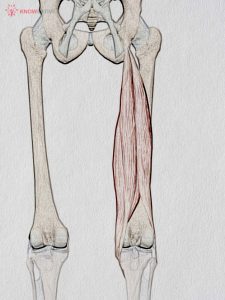Origin
Biceps Femoris:
- Long head—ischial tuberosity, sacrotuberous ligament
- Short head—linea aspera, lateral supracondylar ridge, lateral intermuscular septum
Semitendinosus: Ischial tuberosity
Semimembranosus: Ischial tuberosity
Insertion
Biceps Femoris: Lateral side of head of fibula and lateral condyle of tibia
Semitendinosus: Medial surface of shaft of tibia
Semimembranosus: Medial surface of shaft of tibia
Actions
Biceps Femoris: Flexes leg, long head also extends thigh
Semitendinosus: Flexes and slightly medially rotates leg; after flexion, extends thigh
Semimembranosus: Flexes and slightly medially rotates leg; after flexion, extends thigh
Nerve
Biceps Femoris:
- Long head—tibial part of sciatic nerve (S1–S3)
- Short head—common peroneal part of sciatic nerve (L5, S1, S2)
Semitendinosus: Tibial portion of sciatic nerve (L5, S1, S2)
Semimembranosus: Tibial portion of sciatic nerve (L5, S1, S2)
Note
During walking or running, the hamstrings are used to slow down the leg at the end of its swing and prevent the trunk from flexing at the hip. They are susceptible to being strained by resisting the momentum of these body parts.

